

Guidelines for submitting articles to Santa Rosalia Today
Hello, and thank you for choosing Santa Rosalia.Today to publicise your organisation’s info or event.
Santa Rosalia Today is a website set up by Murcia Today specifically for residents of the urbanisation in Southwest Murcia, providing news and information on what’s happening in the local area, which is the largest English-speaking expat area in the Region of Murcia.
When submitting text to be included on Santa Rosalia Today, please abide by the following guidelines so we can upload your article as swiftly as possible:
Send an email to editor@spaintodayonline.com or contact@murciatoday.com
Attach the information in a Word Document or Google Doc
Include all relevant points, including:
Who is the organisation running the event?
Where is it happening?
When?
How much does it cost?
Is it necessary to book beforehand, or can people just show up on the day?
…but try not to exceed 300 words
Also attach a photo to illustrate your article, no more than 100kb

A morning out in Águilas
What to do on a morning out in Águilas
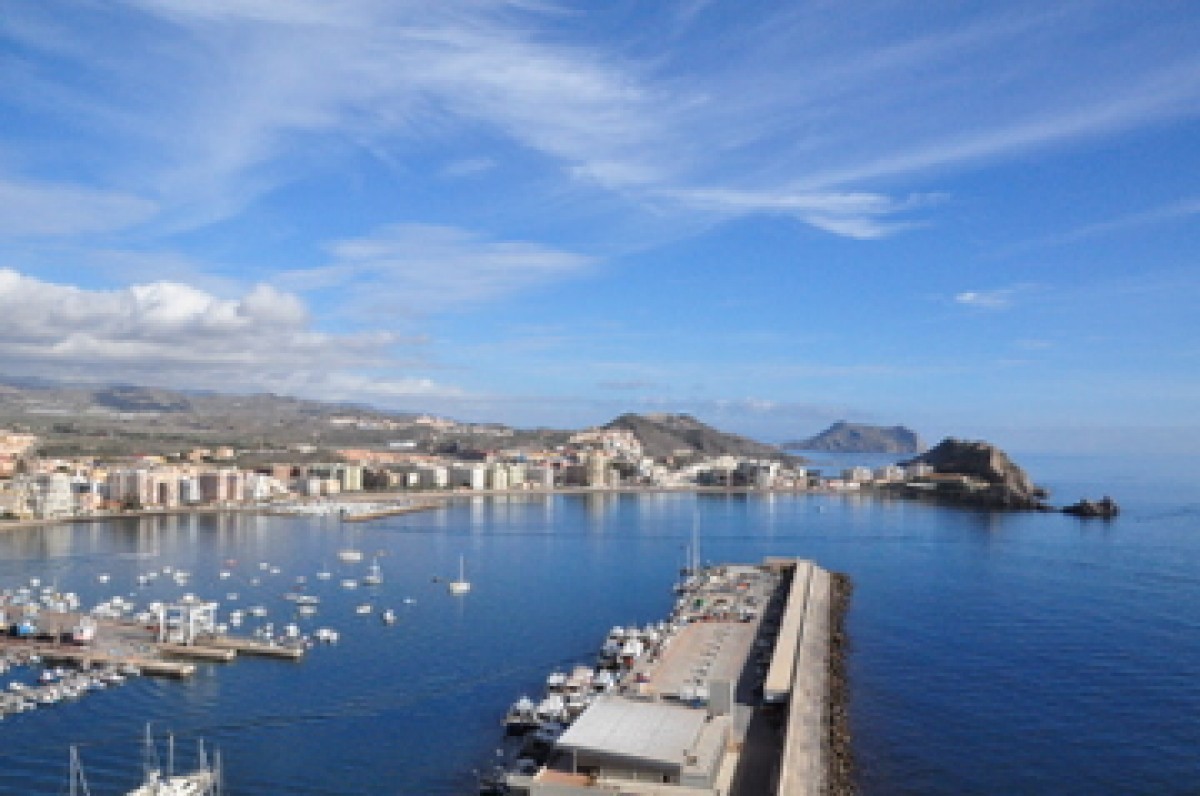
- Pick up map from tourist office
- Visit to the Casino
- Coffee in the Plaza de Espana, and maybe a slice of cake...
- Visit to the Archaeological museum
- Visit to the Castillo de San Juan
- Photo opportunity by the Monumento al Ferrocarril
- Lunch
There is plenty of parking around the Plaza de España and in the surrounding streets, or along the seafront, particularly in winter.
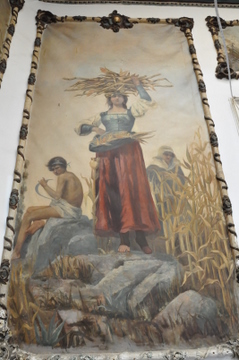
Wall paintings by Murcia artist José Sánchez lend a feeling of faded splendour and days gone by, recalling the times when the Casino was frequented by those engaged in the project to build the Lorca-Baza- Aguilas Railway. This project was undertaken by the British South Eastern Railway Company, who were also responsible for starting one of the first ever football teams in Spain.
There are still a number of families in the area with half British names, as some moved here to work and never left, and an excellent book is available from booksellers in the town which gives the history of the whole railway project, written in both English and Spanish. "Águilas y los Ingleses" is the work of Antonio Hernández Moreno and also covers the history of esparto production, a fascinating topic in its own right and another extremely important industry in the history of Águilas.
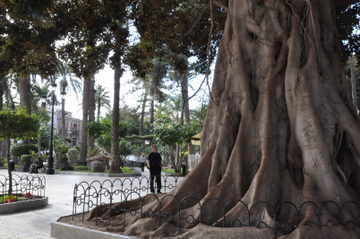
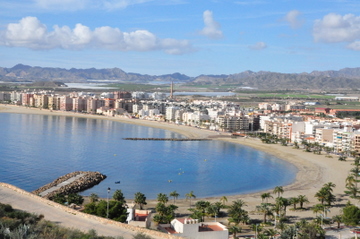
Alternatively, if you have a sweet tooth, check out Confiteráa Enrique, which has been in the same premises in the Plaza de España since 1880. The place overflows with cream-filled treats, magnificent great horns stuffed with cream and chocolate,and enormous nests of sweet orange cream in true traditional Spanish style. You'll burn off the calories climbing up the hill in a minute!
To access the castle, walk back to the tourist office, go straight up Calle Murillo, and you'll see steps going up at the end of the street in front of you. These cut through to the street behind, which then climbs up to the castle. It's a steep walk, so don't even attempt it unless you're pretty fit.
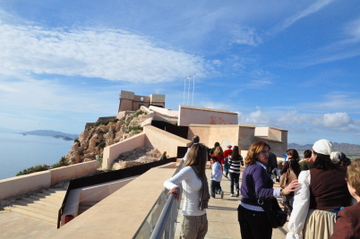
The castle now has a lift to take visitors up to the main entrance, and the views at the top are absolutely stunning.
The Castillo de San Juan that we see today dates back to 1756, although there were other towers built on the same location hundreds of years before, with the ruins of a hexagonal Moorish "Hisn" the earliest confirmed remains, dating from the latter years of the 11th century.
Alfonso X is known to have maintained a garrison here between 1252 and 1284 to warn Lorca of possible attack from the Berber Pirates, a menace which harassed and attacked this coast for hundreds of years, destroying the structures preceding this one on more than one occasion. The last written record of these attacks dates from 1643, when a communication was sent to the King informing him that the Moors had attacked and destroyed the castle.
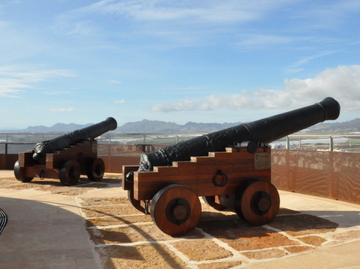
Exhibits inside give interesting information about the lot of a serving soldier, as well as displays which feature the main products of the town: fish, esparto and ores. But the main reason for visiting the Castle has to be the stunning views.
One very interesting audiovisual shows the journey of a descendant of one of the team who built the railway ,re-tracing his grandfather's steps and visiting the area, and other displays give more information about the prehistorical finds surrounding Aguilas. There are not many display cases to see but the structure of the fortress is very unusual and presents one great view after another.
Leaving the castle, go back down head for the sea, aiming to arrive on the Explanada del Puerto.
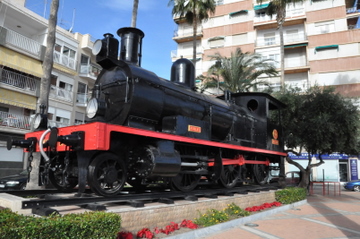
Where to Eat in Águilas
By now it's likely that hunger pangs will be making their presence felt. There are plenty of restaurants to choose from along the seafront, but we were recommended to carry on a little further along the bay, heading for the pharmacy marked on the tourist map opposite the Puerto Deportivo.
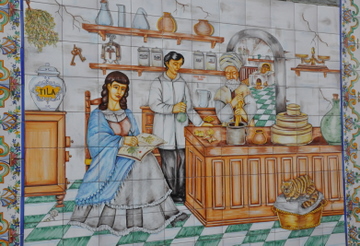
Have a look at the pharmacy opposite on your way out, the hand painted tiles make it one of the nicest-looking chemists' around!
Castillo de San Juan Opening Hours and Charges
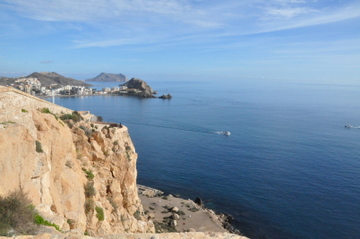
Castillo de San Juan, Entry 2 euros adults, 1 euro groups. Click for seasonal opening hours.Castillo de San Juan.
Casino, train and museum: no charge.
Would we recommend it?
Absolutely, we had a great morning out. The only downside may be the steep climb to the castle, but it's an excellent way to wear out the kids if they've got energy to burn!
More information about Águilas including beaches, what to see, what's on and tourist information can be found on ÁGUILAS TODAY.





































